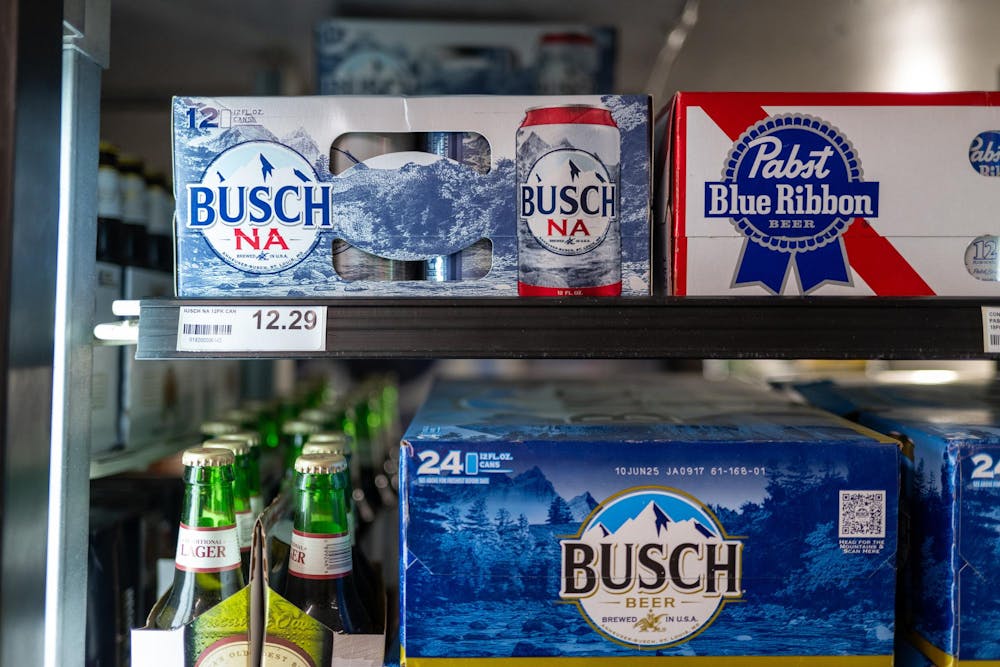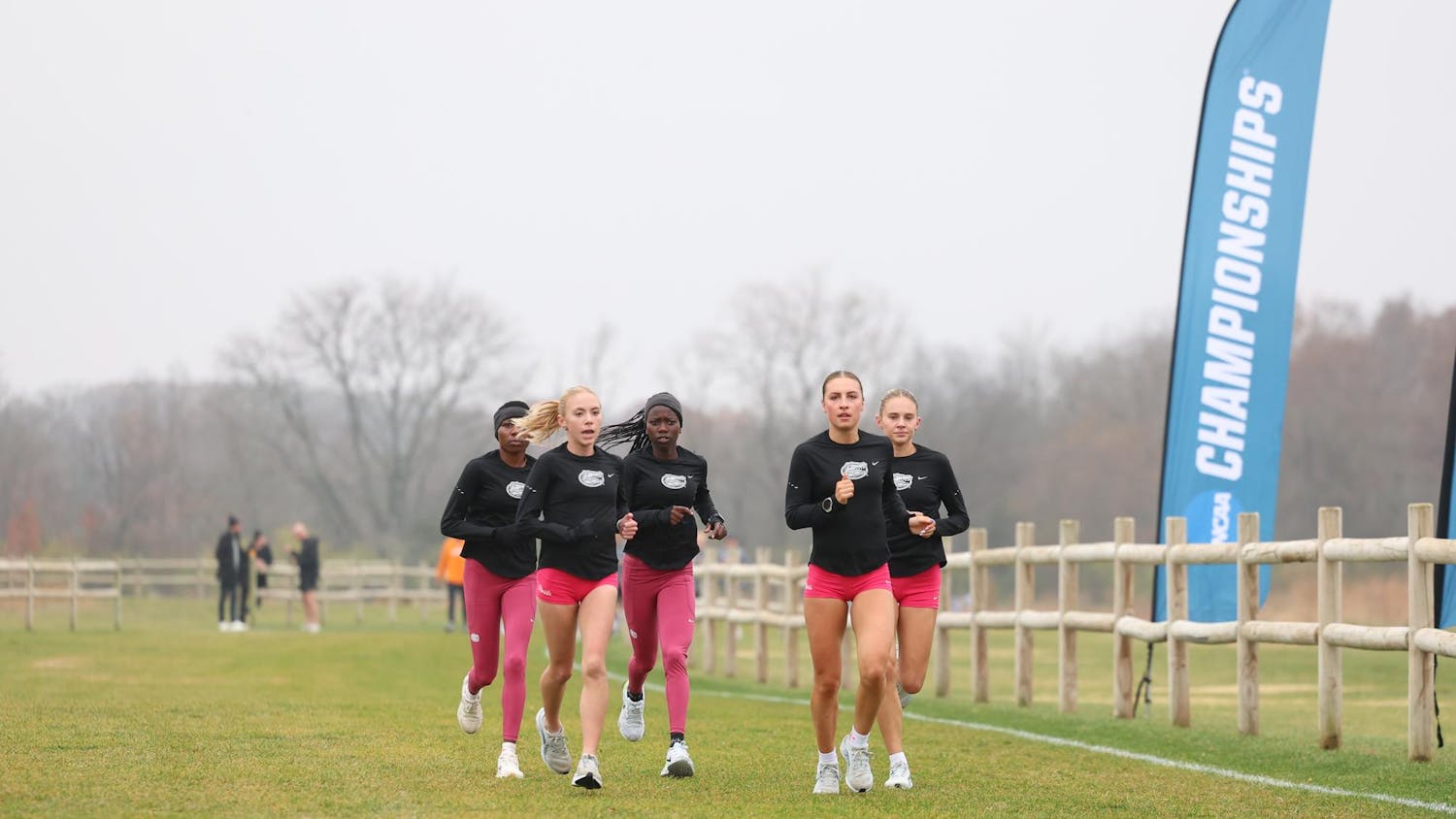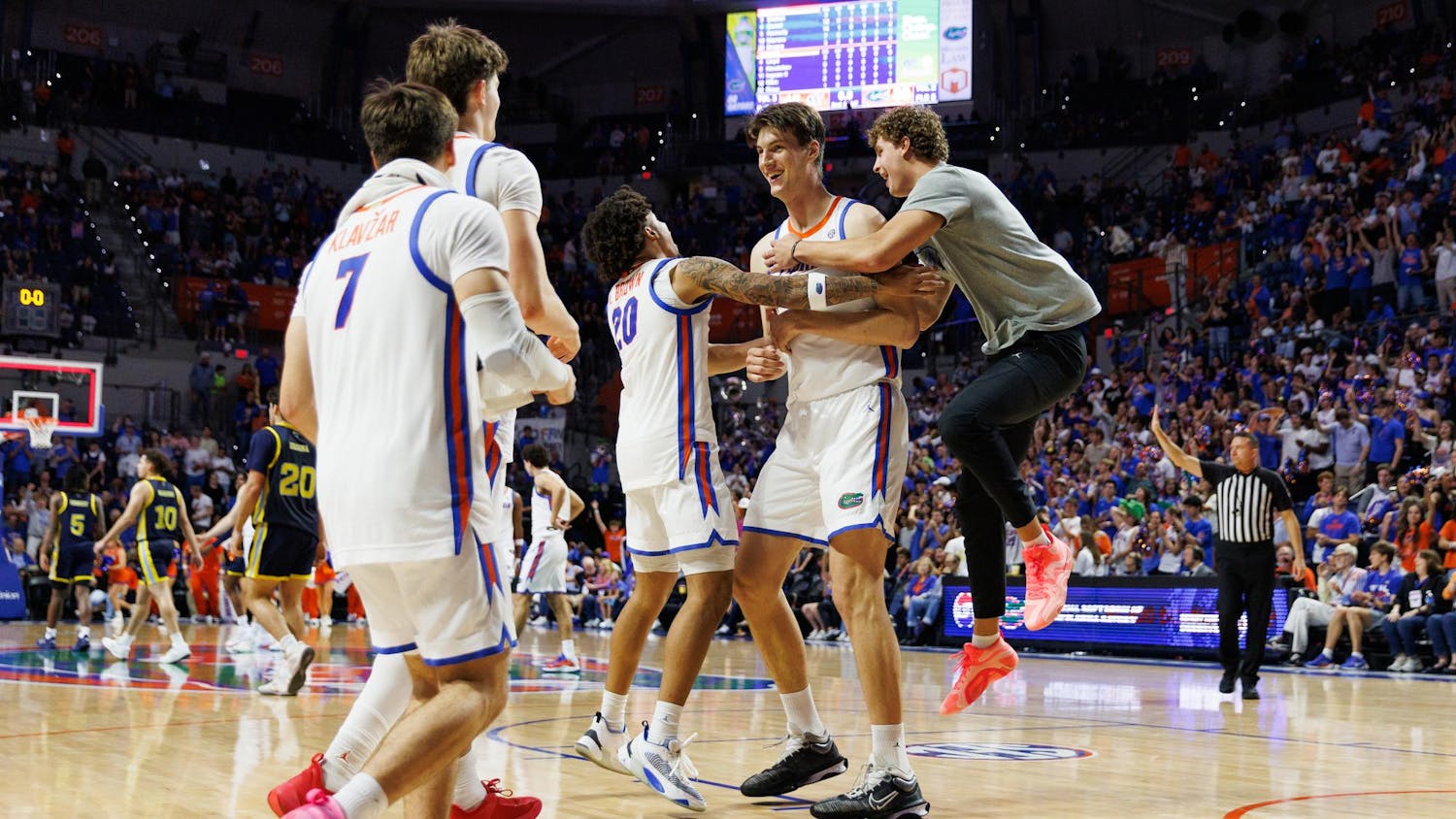The “mocktail” is having its moment, and Modelo is old news — at least according to Quinn Tetterton, a 20-year-old UF theatre sophomore.
Tetterton said his friends drag him to venues where clutching a Solo Cup or seltzer is a social expectation. But Tetterton’s happy to swap booze for alcohol-free beverages like Liquid Death, a sparkling water product packaged to resemble a beer can. He said he wants to feel included but not intoxicated.
“To have something to look like alcohol and cool in your hand, it makes you feel better,” Tetterton said.
He’s not alone. More than half of his Gen Z peers have embraced alcohol-free lifestyles as a matter of personal taste and health improvement.
Shifting attitudes toward drinking coincide with a new government advisory linking alcohol to seven kinds of cancer. As millions of Americans nursed New Year’s hangovers, U.S. Surgeon General Vivek Murthy released a report correlating moderate drinking with an increased risk of developing breast and colon cancer, among five other chronic illnesses.
Along with his Jan. 3 warning, Murthy suggested the government update existing warning labels on alcoholic beverages to reflect cancer risk, which would require congressional action.
But young adults were flirting with temperance before the advisory. Social campaigns encouraging adults to limit their alcohol consumption, like the “sober curious” and Dry January movements, exploded on TikTok and Instagram in the waning hours of 2024. Wellness influencers pounced on the trend and filmed thousands of recipe videos for mocktails — nonalcoholic drinks designed to mimic cocktails.
Tetterton said he isn’t sure Dry January will stick year-round, as New Year’s resolutions are often fleeting. For some people, he added, cutting out alcohol or making a healthy drink swap seems easier in theory than in practice.
A falling-out with alcohol
Americans have increasingly moderated their drinking in the past two decades, a phenomenon driven by health optimization goals, The Atlantic reported last month. That’s increasingly true among young people whose views on drinking are shaped by public health conversations steeped in self-care and wellness.
About 60% of adults under 35 said they drank, down from 72% 20 years ago, according to 2024 Gallup polling.
Dr. Sara Nixon, director of UF’s Center for Addiction Research and Education, said easier access to medical information has potentially given rise to the neo-temperance movement. But understanding the harms associated with drinking isn’t always enough for people to reduce their consumption, she said.
“It takes some ‘oomph’ sometimes to be the only apparent non-drinker [at a social event],” Nixon said. “If you don’t have a ‘reason’ to not drink, that’s sort of stigmatizing.”
The shortcomings of alcohol reduction movements are partly reflected, according to Nixon, by trends in organ transplant operations among young adults.
Liver transplant demand for adults under 40 with alcohol-associated liver disease increased fourfold from 2003 to 2018, according to a study published in the National Library of Medicine.
Prolonged alcohol abuse can also inhibit cognition, said Catalina Lopez-Quintero, an assistant professor in UF's epidemiology department. Over time, intoxication damages neural pathways in the brain, which are responsible for attention and concentration. This is especially detrimental to the developing mind, she added.
And in social situations where peers are drinking, young adults are more vulnerable to making dangerous decisions, Lopez-Quintero said.
“We’re always concerned about [minors] developing alcohol use disorders and whether intoxication is related to experiencing other adverse outcomes like, for example, being engaged in risky sexual behaviors,” she said.
Lopez-Quintero said she hopes the popularization of experimental sobriety and the surgeon general’s warning on alcohol-related cancers will curb underage alcohol abuse.
A healthy dose of skepticism
Rati Venkatesan, a 20-year-old UF economics junior, discovered the sober curious movement on social media. Although she said the campaign’s momentum is encouraging, she doubts the surgeon general’s warning will amplify its influence.
“I think it’s very similar to cigarettes and vapes and things like that, so I think showing that warning isn't gonna curb a lot of people’s wanting to drink,” Venkatesan said.
Current dietary guidelines recommend women consume no more than one alcoholic beverage a day and men consume no more than two. Medical experts think a cancer warning label on alcohol could deter people from reaching for another glass once they’ve exceeded the healthy threshold.
Aditya Narayanan said he thinks alcohol is losing its grip on underage consumers, but he doesn’t think his peers are ready to quit drinking altogether. The 18-year-old UF chemical engineering freshman predicts boozeless seltzers will help people reduce but not eliminate a thirst for alcoholic counterparts like White Claw.
“Obviously, the [nonalcoholic] options will start to increase, but that’s not gonna necessarily change the presence of alcohol,” Narayanan said.
Young people may moderate their drinking but pair alcohol with smoking or taking edibles, he said.
From Dry January to ‘High January’
Henry Reyes-Perez, a 19-year-old UF mechanical engineering freshman, said he thinks Gen Z will replace or at least complement alcohol with drugs.
“[Young people], in general, drink less probably because they vape more,” Reyes-Perez said, referring to electronic cigarette devices that vaporize marijuana and nicotine.
As recreational marijuana is legalized nationwide, analysts predict weed consumption will soon rival that of alcohol. An estimated 17.7 million people engaged in daily or near-daily marijuana use, while 14.7 million drank daily or near-daily in 2022, The Society for the Study of Addiction reported.
The adoption of alcohol alternatives, often infused with cannabis, edible flowers and fruit, may also stifle alcohol consumption — at a cost.
Even as nonalcoholic drinks come to market, Reyes-Perez doesn’t think they’ll gain traction among young people, considering the expense.
“A lot of healthy, sustainable stuff just in general in this economy is usually going to be more expensive,” he said.
Price barriers may slow the widespread adoption of nonalcoholic beverages. Between premium ingredients and a more expensive manufacturing process, the price of nonalcoholic beer has risen three times the rate of traditional beer. Booze-free seltzers, free of the costliest component in a canned cocktail — liquor — retail for nearly the same as the spiked kind.
Industry grapples with changing consumer preferences
Alcohol manufacturers had been formulating nonalcoholic drinks long before the surgeon general’s cancer advisory. While the health warning may curb traditional alcohol sales, it also creates opportunities for innovation, according to Jonathan Judy, a culinary and beverage management instructor at the University of Central Florida.
“Nonalcoholic or alcohol-reduced beer is not new; obviously, it's been around for decades,” Judy said. “But quality, independent craft brewers have taken an interest in nonalcoholic beers, and so that particular product or subset of products is starting to see increased demand.”
The global nonalcoholic and low-alcoholic beverage sector has ballooned to $13 billion, a figure analysts expect to increase, Business Insider reported last month.
Beer maker Heineken saw 11.2% year-over-year sales growth in its nonalcoholic product in 2023. And Anheuser-Busch InBev, which owns a suite of alcohol brands including Michelob and Budweiser, said its nonalcoholic drinks were performing well during an October call with investors.
Reduced alcohol and nonalcoholic drinks are becoming more mainstream, Judy said, making their way into bars and grocery stores.
“The variety of nonalcoholic beers has really exploded recently, so I’m sort of interested to see how that will affect things,” he said. “That space is gonna grow.”
Contact Natalie Kaufman and Avery Parker at nkaufman@alligator.org and aparker@alligator.org. Follow them on X @Nat_ and @AveryParker98398.
Avery Parker is an English and history senior and the Summer 2025 University Editor. When he's not buried in thesis research, he enjoys exploring rivers and listening to The Wrecks.
Natalie Kaufman is the business enterprise reporter and a second-year journalism major. Outside the newsroom, you'll catch her drinking too much caffeine and running.






